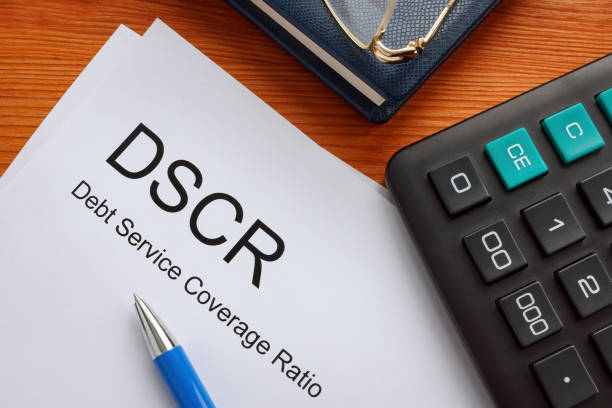When it comes to making informed decisions in real estate investing, understanding your financial metrics is key. One essential tool for investors is the DSCR loan calculator. This calculator helps you evaluate your investment’s potential by assessing the Debt Service Coverage Ratio (DSCR). In this article, we will explore what a DSCR loan calculator is, why it matters, and how to use it effectively to enhance your real estate investment strategy.
What is a DSCR Loan Calculator?
A DSCR loan calculator is a financial tool that helps you determine your debt service coverage ratio. This ratio measures your property’s ability to generate enough income to cover its debt obligations, such as mortgage payments. The DSCR is calculated by dividing your property’s net operating income (NOI) by the total debt service (the monthly mortgage payment).
For example, if your property generates $3,000 in monthly income and your total monthly debt payments are $2,000, your DSCR would be 1.5. This means you are generating 1.5 times the income needed to cover your debt, which is a healthy indicator for lenders.
Why is DSCR Important in Real Estate?
The DSCR loan calculator is important for several reasons. First, lenders use the DSCR to assess the risk of lending to you. A higher DSCR indicates a lower risk because it shows that your property generates sufficient income to cover your loan payments. This can lead to better loan terms and interest rates.
Additionally, maintaining a good DSCR can affect your ability to secure financing for future investments. If your DSCR is below 1, it indicates that you are not generating enough income to cover your debts. This could result in difficulty obtaining loans or unfavorable terms.
Key Components of a DSCR Loan Calculator
To effectively use a DSCR loan calculator, you need to understand the key components involved in the calculation:
- Income: This refers to the total revenue generated by the property. For rental properties, this includes rental income and any additional income from services or amenities.
- Expenses: This includes all costs associated with operating the property, such as maintenance, property management fees, insurance, and property taxes.
- Debt Service: This is the total amount you pay each month towards your mortgage, including both principal and interest payments.
By accurately inputting these values into the DSCR loan calculator, you can get a clear picture of your property’s financial health.
Step-by-Step Guide to Using a DSCR Loan Calculator
Using a DSCR loan calculator is straightforward. Follow these steps to get started:
Step 1: Gather Your Financial Information
Before using the calculator, collect all relevant financial data, including your rental income, operating expenses, and mortgage details.
Step 2: Input Your Total Income
Enter your total monthly income into the calculator. This should reflect all sources of income from the property.
Step 3: Enter Your Total Expenses
Input your total monthly expenses, including operating costs and other financial obligations related to the property.
Step 4: Input Your Debt Service
Enter the total monthly debt service, which includes your mortgage payments.
Step 5: Calculate and Interpret the Results
After entering all the data, click the calculate button. The calculator will provide you with your DSCR. A result above 1 indicates that your income covers your debts adequately, while a result below 1 suggests you may need to reassess your investment strategy.
Interpreting Your DSCR Results
Understanding your DSCR results is crucial. A DSCR of 1 means your income equals your debt payments. A ratio greater than 1 indicates financial health, suggesting that your income exceeds your debt obligations, making it a favorable situation for lenders.
If your DSCR is below 1, it signals potential financial distress. For instance, a DSCR of 0.8 means you are only generating 80% of what you need to cover your debts, which is a red flag for both you and potential lenders.
Practical Tips for Real Estate Investors
Using a DSCR loan calculator is just one aspect of real estate investing. Here are some practical tips to improve your DSCR and make smarter investment choices:
- Increase Rental Income: Consider ways to boost your rental income, such as upgrading your property or providing additional services that justify higher rents.
- Manage Expenses Wisely: Regularly review your operating expenses and find areas where you can cut costs without sacrificing quality.
- Keep Debt Low: Aim to reduce your overall debt burden. This can help improve your DSCR and make your investments more attractive to lenders.
Common Mistakes to Avoid When Using a DSCR Calculator
While the DSCR loan calculator is a valuable tool, investors should be aware of common mistakes that can lead to inaccurate results:
- Overestimating Income: Ensure your income projections are realistic. Don’t inflate your expected rental income; use historical data when possible.
- Underestimating Expenses: Make sure to account for all potential costs, including unexpected repairs and vacancies, which can significantly impact your bottom line.
- Neglecting Market Conditions: Market trends can affect both income and expenses. Stay informed about local market conditions to make better investment decisions.
Final Thoughts
Using a DSCR loan calculator is an essential practice for anyone involved in real estate investing. By accurately assessing your debt service coverage ratio, you can make informed decisions that enhance your financial health and investment potential. Regularly using this calculator not only helps you understand your current financial situation but also prepares you for future investments. For additional calculations and tools to support your investment strategy, visit Oye Calculator. Investing in real estate can be rewarding, but it requires careful planning and analysis. By leveraging tools like the DSCR loan calculator, you can navigate the complexities of real estate investing with confidence.
